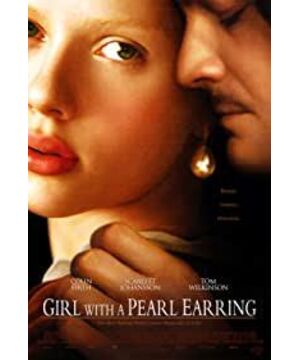Due to the limited length of the movie, it is most natural for the movie to cut the plot of the novel or reverse the order of events. For example, the movie never mentions that the heroine Griet’s younger sister Agnes died of a disease in the plague, and his younger brother Frans met his father. Soon after the accident, he was sent to a ceramic tile workshop as an apprentice, and there were only two old people left at home, etc. As a result, the film could not explain the meaning behind Vermeer’s rebellious daughter Cornelia deliberately breaking Griet’s tiles-Frans later fled the workshop and disappeared. , Griet and her brother are separated forever like a picture on a tile; another hair that seems to belong to another one of Griet was accidentally seen by Vermeer, so she feels that she has no secrets anymore, so she is allowed to follow her after painting Pieter, the butcher’s young man, had a relationship in the back alley. In the novel, this narrative is the most reasonable, but in the movie, the section in the alley is moved back. It feels that there is a lack of coherence; and Vermeer asked to paint Griet. With a slightly open mouth, the novel explains Griet’s mind that "a conservative virgin will not be drawn with a slight open mouth", but in the film this paragraph is placed before the alley incident, and as a result, the original author is lost. The expression on that painting has a meaning.
The end of the novel is that Vermeer died ten years later. Tannake, another maid who was also with Vermeer’s family, was entrusted by Vermeer’s widow, Catharina, to the butcher’s shop to find Griet, who was already the mother of two sons. It turned out that Vermeer had ordered before his death. She gave Griet a pair of pearl earrings from Catharina, but she felt that she was not worthy of having these earrings whether she was a maid or working in a butcher shop. Griet had no choice but to accept it because Vermeer's friend insisted on fulfilling his friend's last wish. Cornelia, who has grown up but is still unmarried, has been eavesdropping on the conversations of the people in the room. She told Griet in private that she could give her the earrings, but Griet gave her a slap in the face. Finally, because Griet was afraid that her husband would ask about the origin of the earrings-she hadn't explained the past in Vermeer's house in these years-so she sold the earrings on the same day, and the money was excused that the Vermeer family owed the butcher's credit back then. Repayment. But the movie only explained that Tannake gave Griet the headscarf and earrings and left. It seemed a bit hastily to the ending of the novel.
The rebellious character of Cornelia in the novel is very carefully described. Unfortunately, the length of the movie is limited by her narrative which is a bit superficial; and in the novel, Vermeer and Griet talk about the color of the clouds in the section that is very detailed, but In the movie, it became Griet's monologue, which is really unsatisfactory.
However, the casting of the movie is really good. When I saw Scarlett Johansson's light brown hair, I could feel Griet's feeling of "the hair fell out like another self".
View more about Girl with a Pearl Earring reviews











